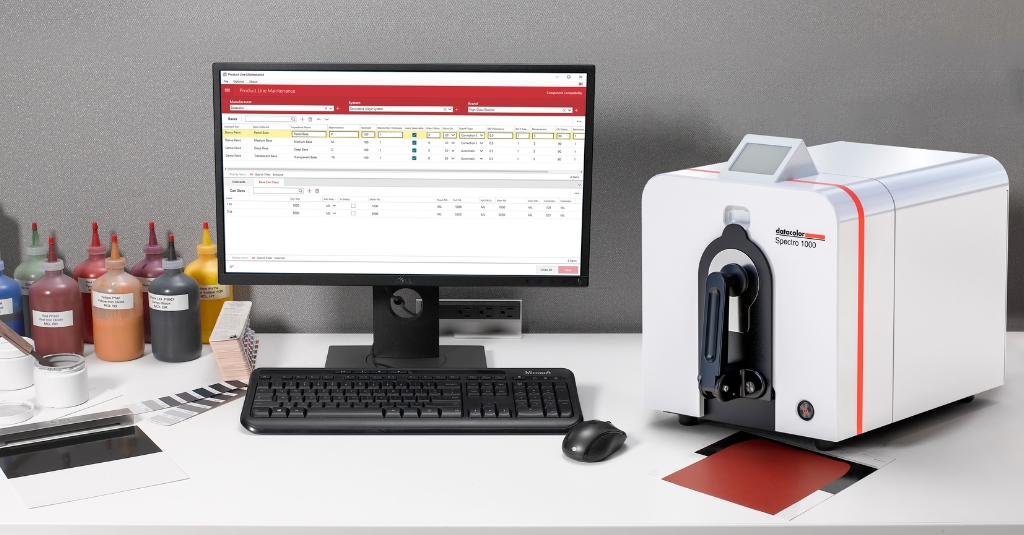In today’s competitive industrial landscape, maintaining consistent color quality across products can be essential for meeting customer expectations and ensuring brand integrity. A robust digital color quality control program is critical for achieving these objectives. Here is a comprehensive guide to establishing an effective color quality control program that any industry can adopt.
Step 1: Define Your Objectives and Requirements
The foundation of a successful color quality control program begins with clearly defined objectives and requirements. First, identify the primary goals of your program, such as ensuring product consistency, minimizing waste, or fulfilling customer specifications. Setting clear objectives helps align color quality initiatives with overall business strategy.
Next, establish the use of either physical or electronic color standards and choose the acceptable tolerances that conform to industry norms and/or customer expectations. Physical standards should be cared for properly to maintain the integrity of the color over time so that your colors in production don’t shift. It is not uncommon for master standards to be stored in a freezer or dark, dry storage area.
Processes and procedures should be documented meticulously, outlining the acceptable color variations for all products. This documentation serves as a reference point for key stakeholders, ensuring everyone is on the same page regarding color quality expectations.

Step 2: Establish Standard Operating Procedures
Standard Operating Procedures (SOPs) are the backbone of any quality control program. Developing comprehensive SOPs for color measurement and quality control processes ensures consistency and accuracy. These procedures should detail every step, from evaluating raw materials used in order to produce colored products and sample preparation, to measurement techniques and data recording.
Training personnel on these SOPs is equally important, as it ensures that everyone involved understands the proper use of measurement instruments and software. Regularly reviewing and updating the SOPs to incorporate new technologies, methods, and feedback from the quality control team will keep the procedures relevant and effective.
Step 3: Select the Appropriate Tools and Technology
Choosing the right tools and technology is crucial for accurate color measurement and control. Reliable instruments, such as spectrophotometers and colorimeters, are essential for precise color measurement. These devices should be selected based on the specific needs of your industry, considering factors like required tolerance of the customer, material type and production environment.
Additionally, investing in advanced color quality control software that integrates with your measurement instruments can streamline data analysis, reporting, and tracking processes. Ensuring compatibility of these tools with your existing systems is vital for smooth implementation and efficient operation of the color quality control program.

Step 4: Implement a System for Monitoring and Reporting
On-going monitoring and real-time reporting are essential for maintaining high color quality standards. Implementing a robust monitoring system that includes raw materials evaluation and testing at various stages of production can help detect and address color deviations promptly.
Automation of the reporting process through software solutions can provide real-time data and analytics, offering insights into color quality performance. Establishing a feedback loop where this data is shared with production teams ensures that any issues are swiftly addressed, maintaining consistent color quality throughout the production process.
Step 5: Conduct Regular Audits and Make Continuous Improvement
Regular audits and a commitment to continuous improvement are vital for the long-term success of a color quality control program. Scheduling regular audits ensures compliance with SOPs and identifies areas for improvement.
In addition, gathering feedback from customers and internal stakeholders provides valuable insights into color quality, guiding informed adjustments to the program.
On-going employee training is also essential; regular training sessions keep staff updated on the latest practices and technologies in color quality control. Promoting a culture of continuous improvement encourages innovation and keeps the organization updated with the latest advancements in color measurement technology and quality control practices. This proactive approach not only enhances product quality but also strengthens the overall color quality control program.
By following these key steps, industries can establish a strong digital color quality control program that ensures product consistency, meets customer expectations, and supports continuous improvement.
Connect with Our Color Experts!







